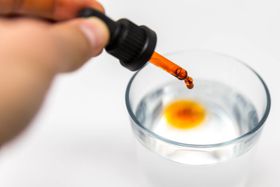Recovering From Muscle Strains: 5 Crucial Tips for a Speedy Return
Published April 10, 2023.

Muscle strains occur as a result of the overstretching or tearing of muscle fibres and are most common in the neck, shoulder, lower back, and legs. While they can be mild, untreated muscle strains can lead to complications and even permanent damage. Understanding your muscle strain and applying the correct treatment techniques from the beginning is a necessity.
» Need help figuring out your wellness plan? Let our quiz help
1. Understand the Causes and Symptoms of Muscle Strains
Types
Muscle strains may be classified into three types depending on the severity of the injury:
- Grade 1: Mild strain caused by minor stretching or tearing of muscle fibres—causes mild pain and swelling
- Grade 2: Moderate strain caused by a greater degree of stretching or tearing of the muscle, leading to moderate pain, swelling, and stiffness
- Grade 3: Complete muscle rupture causing severe pain, swelling, and weakness
Symptoms
While the symptoms of muscle strain may vary depending on the grade of injury, you should expect to notice the following:
- Mild to severe pain in the affected muscle and surrounding area
- Inflammation, characterized by swelling, redness, and warmth in the affected area
- Limited range of motion
- Muscle weakness
- Muscle spasms
Causes
- Repetitive stress
- Poor muscle conditioning
- Sudden movements
- Poor body mechanics during activities
- Muscle fatigue
- Trauma
- Muscle imbalance
- Loss of flexibility due to ageing
- Dehydration
- Cold weather
2. Use RICE
RICE (Rest, Ice, Compression, and Elevation) is a simple, yet effective, approach to treating pain, addressing inflammation, and promoting healing.
Rest
Resting involves keeping the area from further activity, thus preventing further damage and allowing the muscle to recover and heal. Sleep is an essential part of the resting and recovery process.
With a mild strain, a few days of rest may be enough to relieve pain. More severe strains (grades 2 and 3) may require up to weeks of rest. Thus, the general idea is to rest the muscle until the pain, tenderness to touch, and swelling subsides.
» Unlock the power of a good night's rest with our tips
Ice
Cold sensations can block pain perception and reduce inflammation (1). Ice constricts the blood vessels, limiting blood flow and reducing swelling, while also causing numbness and reduced nerve activity in the area.
You can apply ice or a cold compress to the affected area for 20 minutes at once (avoid applying ice directly on the skin as it can cause tissue damage), multiple times daily.
Compression
Swelling and inflammation can increase an individual's perception of pain, and there is evidence that compression can reduce the amount of swelling and, thus, the resulting pain (2). For maximum effect, wrap the entire strained muscle firmly, preferably with an elastic strap or muscle tape, while ensuring that it is not too tight.
Elevation
Raising the affected area above the heart level encourages circulation, which can also reduce swelling. Elevate the injured muscle as often as possible.
3. Stretch and Strengthen the Injured Muscle
Without activity, muscle weakness will set in. So, it is essential that while the strain heals, you do not leave your muscle inactive for too long. Apart from muscle weakness, staying inactive increases the healing period. Once you experience pain relief, you should begin gentle stretching and strengthening exercises to help recondition your muscle, improve its flexibility, and promote healing.
» Suffering from lower back pain? See our physical therapist-approved exercises
How Long Does a Strained Muscle Take to Heal?
The duration of injury depends on the type of strain, affected muscle, and how early you seek treatment. If caught soon enough, a mildly strained muscle should recover within a few days, while severe muscle strain may take several weeks to months. You should bear this in mind while stretching and strengthening the muscle so that further injury doesn’t occur
4. Massage the Injured Muscle
A strained muscle will benefit from massage. Massage will relax the muscle, relieve pain, improve flexibility, and promote healing by stimulating blood flow to the affected area. The massage technique will depend on your expertise. However, the most common types are Swedish massage, deep tissue massage, and trigger point therapy.
5. Avoid Inflammatory Foods
Food that speeds up inflammation, like processed food, sugar, and trans fats can also delay healing after muscle strain. To aid recovery, aim for an anti-inflammatory diet that contains fruits, vegetables, and whole grains.
Protein and healthy fats are also helpful during recovery.
Can You Avoid Pain During Your Recovery?
A muscle strain may cause pain, but you do not have to endure it. By applying RICE, massage, gentle stretches, and a dietary change, you can ensure pain relief and a quick return to activity. However, if these home remedies do not bring improvement, you should seek the medical expertise of a doctor or physiotherapist.








